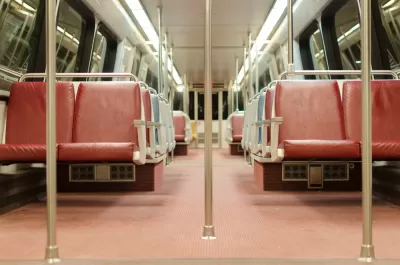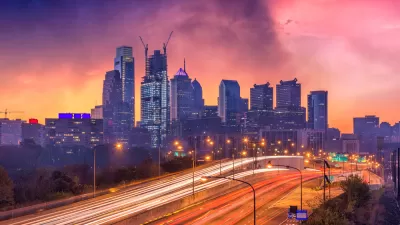A more sedentary approach to commuting is now more common than taking the bus or train to work, trailing only driving to work as the most common commute mode.

"The latest estimates from the U.S. Census Bureau published last week show that approximately 8 million workers primarily work from home," reports Mike Maciag. "That makes telework now second behind only driving as the most common means of getting to work, exceeding public transportation for the first time."
The share of commuters choosing telecommuting in the most recent American Community Survey has grown steadily, reaching 5.2 percent. Transit commuters remains flat at 5 percent.
According to Maciag, several factors are contributing to the growth of telecommuting, including employers programs and improvements in technology.
One key demographic distinction is worth mentioning to complicate the picture: "older workers are significantly more likely to telework than younger age groups."
Maciag lists more details about the data and also a few reasons why public transit's commute share has been suppressed in recent years.
FULL STORY: More Americans Now Telecommute Than Take Public Transportation to Work

Alabama: Trump Terminates Settlements for Black Communities Harmed By Raw Sewage
Trump deemed the landmark civil rights agreement “illegal DEI and environmental justice policy.”

Planetizen Federal Action Tracker
A weekly monitor of how Trump’s orders and actions are impacting planners and planning in America.

The 120 Year Old Tiny Home Villages That Sheltered San Francisco’s Earthquake Refugees
More than a century ago, San Francisco mobilized to house thousands of residents displaced by the 1906 earthquake. Could their strategy offer a model for the present?

In Both Crashes and Crime, Public Transportation is Far Safer than Driving
Contrary to popular assumptions, public transportation has far lower crash and crime rates than automobile travel. For safer communities, improve and encourage transit travel.

Report: Zoning Reforms Should Complement Nashville’s Ambitious Transit Plan
Without reform, restrictive zoning codes will limit the impact of the city’s planned transit expansion and could exclude some of the residents who depend on transit the most.

Judge Orders Release of Frozen IRA, IIJA Funding
The decision is a victory for environmental groups who charged that freezing funds for critical infrastructure and disaster response programs caused “real and irreparable harm” to communities.
Urban Design for Planners 1: Software Tools
This six-course series explores essential urban design concepts using open source software and equips planners with the tools they need to participate fully in the urban design process.
Planning for Universal Design
Learn the tools for implementing Universal Design in planning regulations.
Clanton & Associates, Inc.
Jessamine County Fiscal Court
Institute for Housing and Urban Development Studies (IHS)
City of Grandview
Harvard GSD Executive Education
Toledo-Lucas County Plan Commissions
Salt Lake City
NYU Wagner Graduate School of Public Service





























